Crown Of Thorns Has Spots: Treating A Crown Of Thorns With Leaf Spot
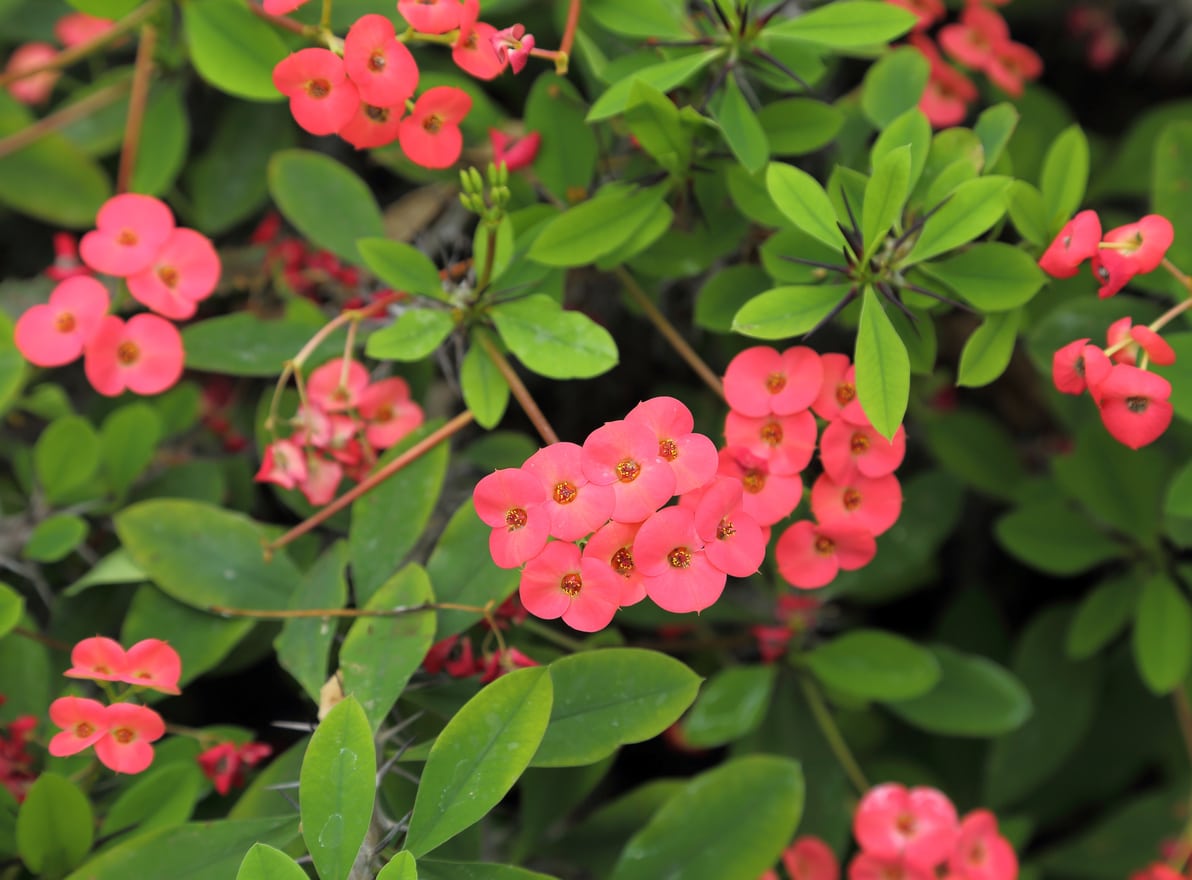

Bacterial leaf spot on crown of thorns causes unsightly lesions. They can become larger and merge, completely destroying leaf tissue and ultimately causing a plant to die. If you’re seeing spots on your crown of thorns, know how to determine if it is leaf spot and what to do about it.
My Crown of Thorns Has Spots
Crown of thorns is a semi-evergreen plant that produces small leaves, a lot of spiky thorns, and pretty little flowers throughout the year in warm climates. In colder climates, crown of thorns makes a good houseplant. Unfortunately, it can be impacted by a disease called bacterial leaf spot, caused by bacteria called Xanthomonas. Spotted crown of thorns plants may be suffering from this bacterial disease, but spots can also be caused by fungal infections and injury. To determine if the issue is bacterial leaf spot, look at the shape. This particular disease causes spots that follow the veins of the leaves. This pattern results in angular shapes to the spots, which are grayish brown and develop yellow haloes. The spots will be different sizes and shapes and occur unevenly on leaves. Over time they grow into each other, producing large areas of dead tissue.
Treating Crown of Thorns with Leaf Spot
If you have spotted crown of thorn plants and it seems to be bacterial leaf spot, it is important to remove affected leaves and plants and take steps to prevent spreading it to other plants. In addition to crown of thorns, this disease can infect poinsettias, geranium, zebra plant, and begonia. The disease is transferred from plant to plant or leaf to leaf by splashing water. Avoid overhead irrigation and be sure plants have enough space between them for airflow to allow leaves to dry and to reduce humidity. Disinfect any tools you use on diseased plants and destroy the affected leaves. Copper-containing sprays are, unfortunately, only partly effective in treating and controlling bacterial leaf spot on crown of thorns and other plants. You can try using it to protect plants that have not yet been affected, but good coverage is essential for the best results.
Gardening tips, videos, info and more delivered right to your inbox!
Sign up for the Gardening Know How newsletter today and receive a free copy of our e-book "How to Grow Delicious Tomatoes".

Mary Ellen Ellis has been gardening for over 20 years. With degrees in Chemistry and Biology, Mary Ellen's specialties are flowers, native plants, and herbs.
-
 Looking For Plants To Give You The Soft And Fuzzies? Try These 5 Fuzzy Leaf Plant Options
Looking For Plants To Give You The Soft And Fuzzies? Try These 5 Fuzzy Leaf Plant OptionsLovers of texture, drama, silver foliage and tactile plants will adore these special sensory garden additions. These fuzzy leaf plant options will leave you all aglow
By Susan Albert
-
 Get Ready For A Summer Of Hummers! Grow These Full Sun Hummingbird Plants and Flowers
Get Ready For A Summer Of Hummers! Grow These Full Sun Hummingbird Plants and FlowersIf you’re lucky enough to enjoy a sunny backyard, make sure you are maxing out on your pollinator opportunities and grow these full sun hummingbird plants and flowers
By Tonya Barnett
-
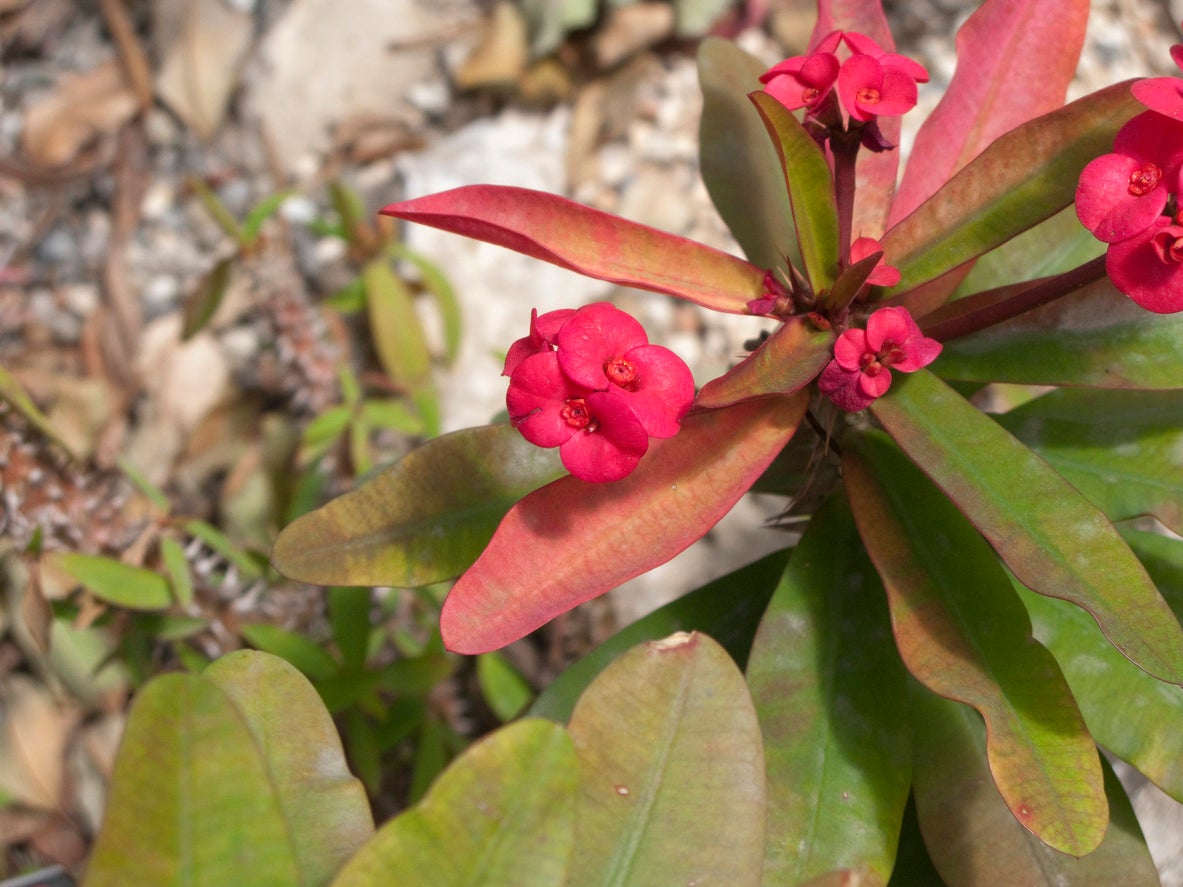 Crown Of Thorns Plant Froze: Can A Crown Of Thorns Survive A Freeze
Crown Of Thorns Plant Froze: Can A Crown Of Thorns Survive A FreezeNative to Madagascar, crown of thorns is a desert plant suitable for growing in the warm climates of USDA plant hardiness zones 9b through 11. Can a crown of thorns plant survive a freeze? Learn more about dealing with crown of thorns cold damage in this article.
By Mary H. Dyer
-
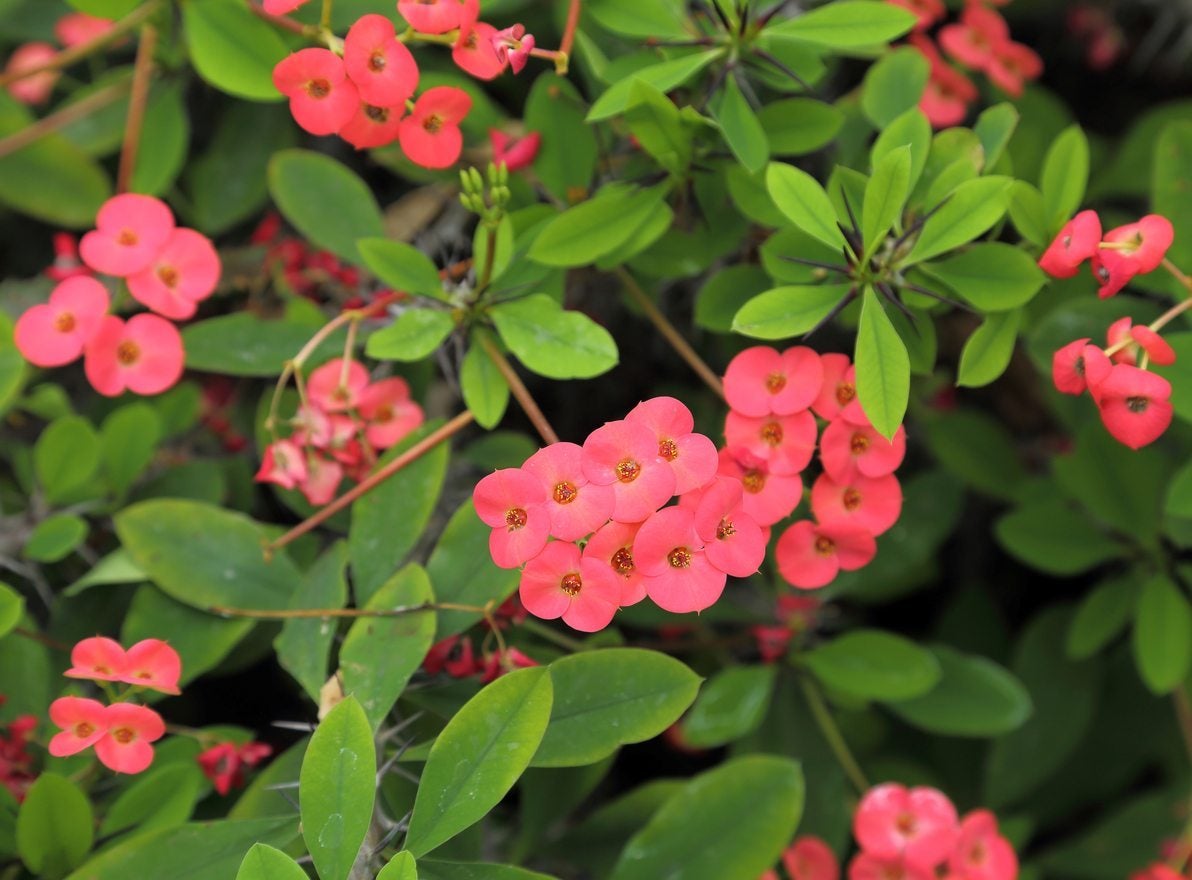 Cutting Back Crown Of Thorns: How To Prune A Crown Of Thorns Plant
Cutting Back Crown Of Thorns: How To Prune A Crown Of Thorns PlantMost types of crown of thorns have a natural, branching growth habit, so extensive crown of thorns pruning isn?t generally needed. However, some fast-growing or bushier types may benefit from pruning or thinning. Click here to learn the basics of pruning crown of thorns.
By Mary H. Dyer
-
 Crown Of Thorns Euphorbia: Tips On Growing Crown Of Thorns Outdoors
Crown Of Thorns Euphorbia: Tips On Growing Crown Of Thorns OutdoorsHeat tolerant and drought resistant, the crown of thorns plant is a real gem. Usually seen as houseplants, you can plant crown of thorns in the garden in warm climates. For tips about growing crown of thorns outdoors, this article will help.
By Teo Spengler
-
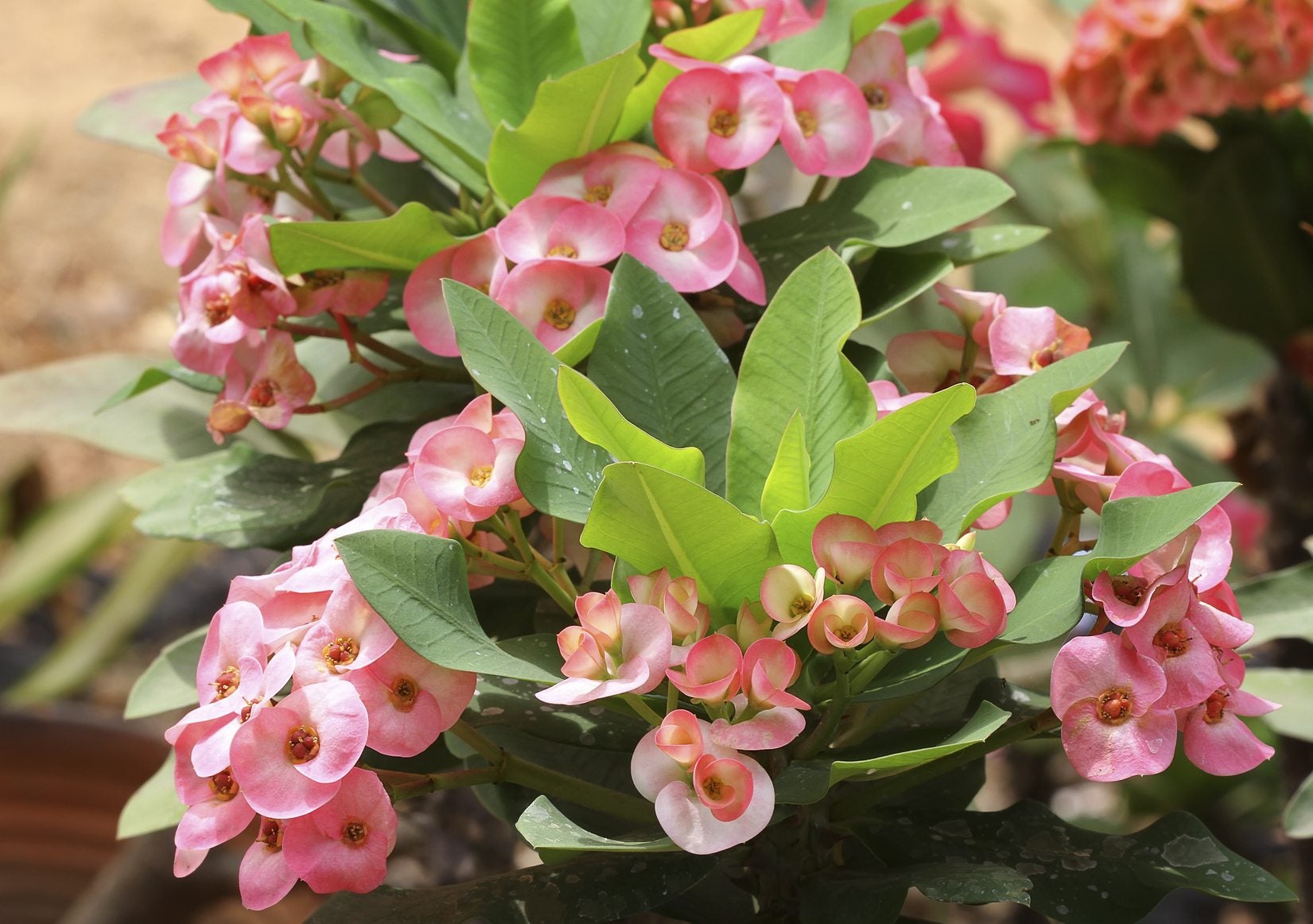 Crown Of Thorns Plant Propagation – How To Propagate Crown Of Thorns
Crown Of Thorns Plant Propagation – How To Propagate Crown Of ThornsCrown of thorns plant propagation is generally through cuttings, which is a fast method of establishing the plant. They can produce seed if they bloom, but germination is fickle and it is much easier to establish plants from cuttings. This article will help.
By Bonnie L. Grant
-
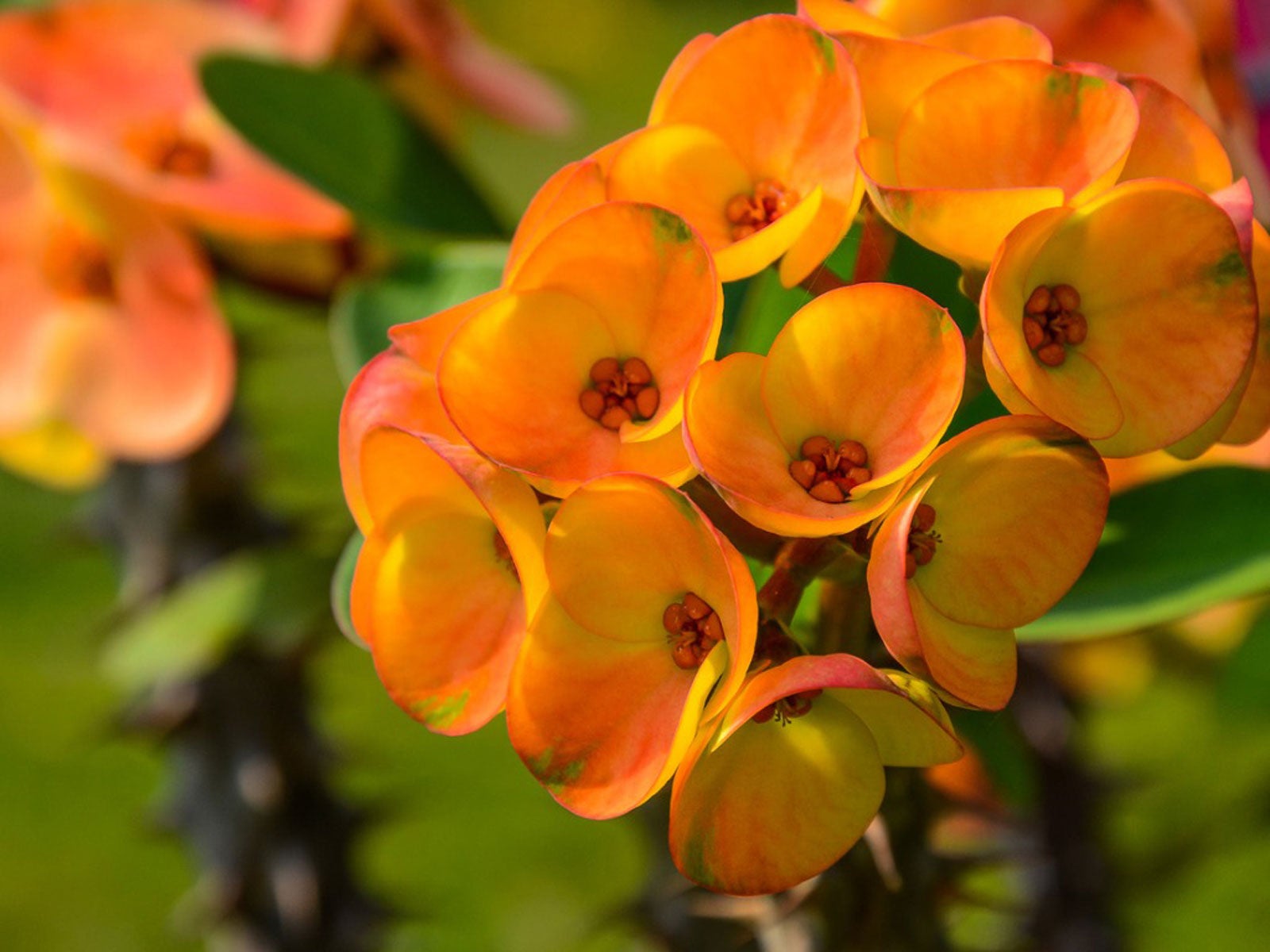 Crown Of Thorns Plant, a Complete Indoor Care Guide
Crown Of Thorns Plant, a Complete Indoor Care GuideA crown of thorns plant will light up your home with its colorful blooms. It likes a dry indoor environment and is not particularly fussy.
By Jackie Carroll